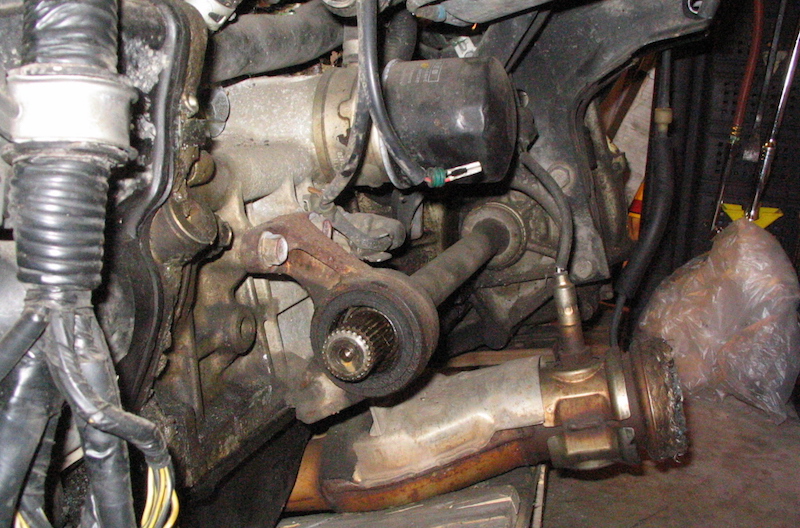So your check engine light is on. As you probably know, the check engine light (CEL) can light up for all sorts of reasons. But since the introduction of OBD-II back in the 1990s, many of those reasons are stored in a standardized set of diagnostic trouble codes that can be accessed with a generic code reader.
The good thing about the CEL and the entire OBD-II engine management and diagnostic system is that it takes a lot of the guesswork out of what's actually going on with a vehicle's engine and drivetrain. You or a tech can connect a code reader to the OBD-II port and quickly access any trouble codes that are stored in the engine computer, pointing you in the right direction for diagnosis and repair.
Note: Code scanning is one of the free services at your local Advance Auto Parts store.
Where it can get tricky, though, is interpreting what the trouble codes mean. At times, there's a certain amount of reading between the lines needed to come up with an informed conclusion on why a certain code might be stored—and a single problem might cause a cascade of trouble codes to all be stored.
To help you learn more about these codes and decide whether the issue is one you can tackle yourself or one that you should take to a trained technician, Advance Auto Parts will be breaking down common codes. In this article, we focus on trouble code P0135 and what it means.

P0135 O2 Sensor Heater Circuit Malfunction — What It Means
Since the early 80s, vehicles have been equipped with oxygen sensors upstream (before the catalytic converter) in the exhaust system. The O2 sensor monitors the content of exhaust gases and sends a signal back to the PCM, which uses that information to determine fuel metering and timing. The O2 sensor is one of the most basic parts of emission control, and is equipped with a heating element that prevents the system from running too long in open-loop mode until the engine warms up.
The O2 sensor needs to heat up to about 600 degrees F before it switches to closed-loop mode; the heater element is to help speed that along. In open-loop mode, the PCM will supply a rich fuel mixture and will alter idle speed and ignition timing for a cold engine. The heater element also prevents the O2 sensor from cooling off too much during an extended period of idling, when exhaust gas temps would drop. Some technicians will test the heater element separately by connecting a small incandescent bulb (like a side-marker bulb) to the leads for the heater, but that's a bit of a tangent from this article.
NOTE: Sometimes a failing engine coolant temperature sensor can mimic these symptoms by "fooling" the PCM into thinking the engine isn't at operating temperature. Be on the look out for ECT sensor-related codes.
The P0135 code occurs when the PCM tests the signal from the O2 sensor on Bank 1 of a V6 or V8 engine and detects excessive resistance or a short in the heater circuit's feed.
Symptoms
- Rough running
- Poor fuel economy
- Black smoke from exhaust pipe (possibly)
- Poor performance
What Happens If I Ignore It?
The O2 sensor is a part that has a finite service life, usually 70-100k miles at the most. There are plenty of vehicles on the road with bad O2 sensors and illuminated CELs, running poorly and using too much fuel. Thing is, though, it won't get better and as the platinum tip of the O2 sensor gets more carbon-fouled from a rich mixture, you'll just see performance get worse and worse. This isn't a problem you should put off.
Possible Fixes
- Clear the codes in the PCM, test-drive the vehicle and see if the P0135 code returns.
- Inspect the leads to the O2 sensor for loose connections, damage, corrosion or burned wiring.
- Use your multimeter to make sure the O2 sensor is getting a reference voltage from the battery, with key on/engine off. You may need to consult a service manual for your make and model to find out where the wiring harness for the Bank 1 O2 sensor is located, and what the value for the reference voltage should be.
- Check the engine ground for a solid connection and no corrosion.
- If everything checks, replace the O2 sensor.
Replacing the O2 sensor can be a little tough, depending on your vehicle. The sensor can be difficult to access and you may need extensions, a wobble drive or other tools to get to it. Advance Auto Parts offers an O2 sensor socket, a deep-well socket that's specially designed for this job. The sensor is also subject to thousands of heat/cool cycles in the exhaust stream, resulting in a stubbornly tight fit. You may need to soak it with penetrant first and maybe perform the job when the exhaust system is still a little warm (wear gloves!) or apply a heat gun to the sensor first, if possible.
Have you ever seen this code? Let us know how you handled it in the comments.








